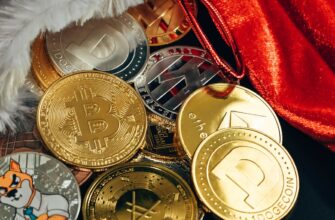Understanding Blast Coin Before You Buy
Before diving into purchasing Blast Coin ($BLAST), it’s crucial to understand what it is. Blast is a Layer 2 blockchain network designed to offer native yield for ETH and stablecoins, aiming to enhance scalability and efficiency for decentralized applications (dApps). Its native token, $BLAST, facilitates network operations, governance, and potentially other utilities within its ecosystem. “Safe” buying involves thorough research (DYOR – Do Your Own Research), using reputable platforms, and implementing robust security practices to protect your investment from scams and theft.
Essential Steps to Buy Blast Coin Securely
Follow these critical steps to minimize risks when acquiring Blast Coin:
- Deep Research (DYOR): Investigate Blast’s official website, whitepaper, team, use cases, tokenomics (supply, distribution), and community sentiment. Verify information across multiple reliable sources (CoinMarketCap, CoinGecko, official socials).
- Choose a Reputable Exchange: Select established, secure cryptocurrency exchanges known for strong security protocols and regulatory compliance. Avoid unknown platforms with unrealistic promises.
- Secure Your Accounts: Before signing up, ensure you have a secure email and plan for strong, unique passwords. Enable Two-Factor Authentication (2FA) using an authenticator app (like Google Authenticator or Authy) on *all* related accounts (exchange, email, wallet). Never use SMS 2FA if avoidable.
- Select a Secure Wallet (Optional but Recommended): Decide where to store your $BLAST after purchase. For maximum security, use a non-custodial hardware wallet (Ledger, Trezor). Software wallets (MetaMask, Trust Wallet) are convenient but less secure than hardware. Leaving coins on an exchange (custodial wallet) carries higher risk.
- Fund Your Exchange Account Securely: Deposit fiat currency (USD, EUR, etc.) via secure methods like bank transfer (ACH/SEPA) or purchase crypto (like USDT or ETH) from a trusted source to swap for $BLAST. Avoid using public Wi-Fi for transactions.
- Execute the Trade Carefully: Navigate to the trading pair ($BLAST/USDT, $BLAST/ETH, or $BLAST/fiat) on your chosen exchange. Double-check the token contract address against Blast’s official sources before trading to avoid scams. Use limit orders for better price control.
- Withdraw to Your Secure Wallet: If not actively trading, promptly withdraw your $BLAST tokens to your pre-setup non-custodial wallet. Verify the receiving address meticulously. Pay attention to network fees (gas).
Where to Buy Blast Coin Safely (Reputable Exchanges)
Blast Coin ($BLAST) is typically available on major centralized exchanges (CEXs). Always verify the token’s official contract address on Blast’s website or block explorer before trading. Popular and generally secure options include:
- Binance: One of the largest global exchanges, known for high liquidity and security measures. Offers various trading pairs.
- Bybit: Popular derivatives exchange also offering a robust spot market with strong security features.
- KuCoin: Known for listing a wide variety of tokens early, with a focus on security.
- Gate.io: Another large exchange supporting numerous cryptocurrencies and trading pairs.
- Decentralized Exchanges (DEXs): Platforms like Uniswap (on Ethereum before bridging) or native Blast DEXs (once available) allow peer-to-peer trading. Requires connecting a Web3 wallet (e.g., MetaMask). Critical: Always verify the token contract address directly from the official Blast source when using a DEX to avoid fake tokens.
Important: Exchange availability varies by region. Check if the exchange operates in your country and complies with local regulations. Never share your private keys or seed phrase with anyone!
Storing Your Blast Coin Securely
Where you store your $BLAST significantly impacts security:
- Hardware Wallets (Cold Storage – Most Secure): Devices like Ledger or Trezor store private keys offline, immune to online hacks. Ideal for long-term holdings. Connect via MetaMask to interact with Blast dApps.
- Software Wallets (Hot Wallets – Convenient): Apps like MetaMask, Trust Wallet, or Coinbase Wallet. Easier for frequent transactions but connected to the internet, making them more vulnerable than hardware wallets. Ensure strong device security.
- Exchange Wallets (Custodial – Least Secure for Holding): Convenient for active trading, but you don’t control the private keys. The exchange holds your coins, meaning you rely entirely on their security. Only keep funds here if actively trading; withdraw to self-custody otherwise.
Golden Rule: Write down your wallet’s recovery seed phrase on physical paper (never digitally) and store it securely offline in multiple safe locations. This is your ultimate backup.
Blast Coin (BLAST) Buying FAQ
Q1: Is Blast Coin ($BLAST) safe to invest in?
A1: All cryptocurrency investments carry inherent risk, including volatility and potential loss. The “safety” of $BLAST depends on the project’s success, market conditions, and your own security practices. Thorough research (DYOR) and secure storage are essential.
Q2: What’s the safest way to buy Blast Coin?
A2: The safest method involves: 1) Researching Blast thoroughly, 2) Using a reputable, secure exchange with strong KYC/AML and 2FA, 3) Verifying the $BLAST contract address before trading, 4) Enabling strong 2FA on all accounts, 5) Withdrawing tokens to a secure non-custodial hardware wallet after purchase.
Q3: How do I avoid Blast Coin scams?
A3: Be extremely wary of:
- Unsolicited offers (DMs, emails) promising guaranteed returns or free tokens.
- Fake websites or social media profiles impersonating Blast or exchanges.
- Requests for your private keys, seed phrase, or sending crypto to “verify” your wallet.
- Fake token contracts on DEXs – ALWAYS verify the official contract address.
Only use official links from the Blast website or verified social media channels.
Q4: Can I buy Blast Coin with a credit card?
A4: Some exchanges (like Binance, Bybit) may offer direct credit/debit card purchases for $BLAST or allow you to buy stablecoins (USDT, USDC) with a card, which you can then trade for $BLAST. Be aware of potentially high fees.
Q5: Do I need a Blast wallet to buy $BLAST?
A5: No, you initially buy $BLAST on an exchange. However, for secure long-term storage and interacting with Blast dApps, you will need a compatible Web3 wallet like MetaMask configured for the Blast network. You transfer your $BLAST from the exchange to this wallet.
Conclusion: Safety is Paramount
Buying Blast Coin safely hinges on vigilance, research, and robust security hygiene. Prioritize using established exchanges, meticulously verify all details (especially contract addresses), enable strong 2FA, and move your $BLAST to a secure non-custodial wallet, preferably hardware, for long-term storage. Continuously educate yourself about crypto security best practices and remain skeptical of offers that seem too good to be true. By following this guide, you significantly reduce the risks associated with purchasing and holding cryptocurrency like Blast Coin.








